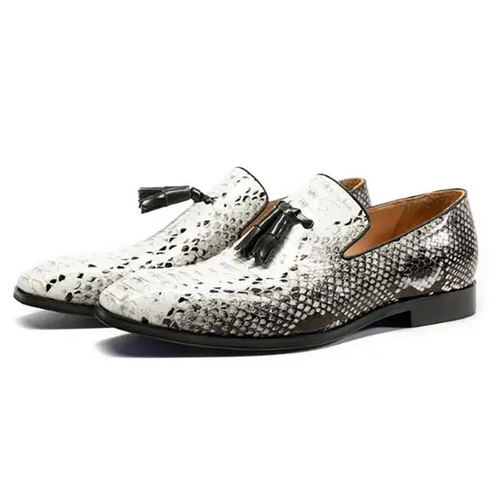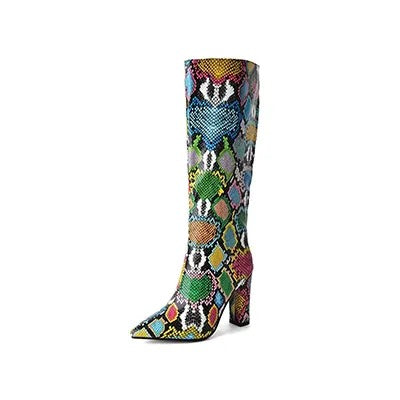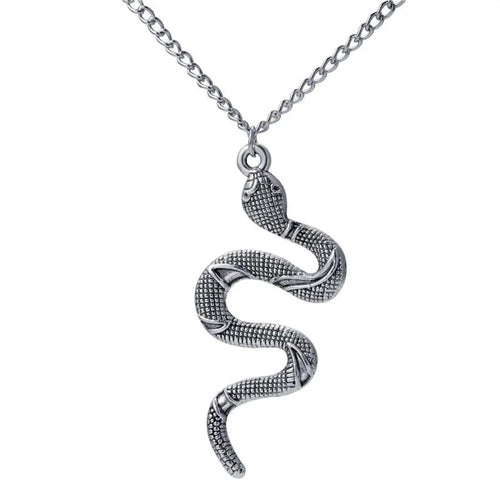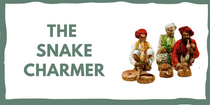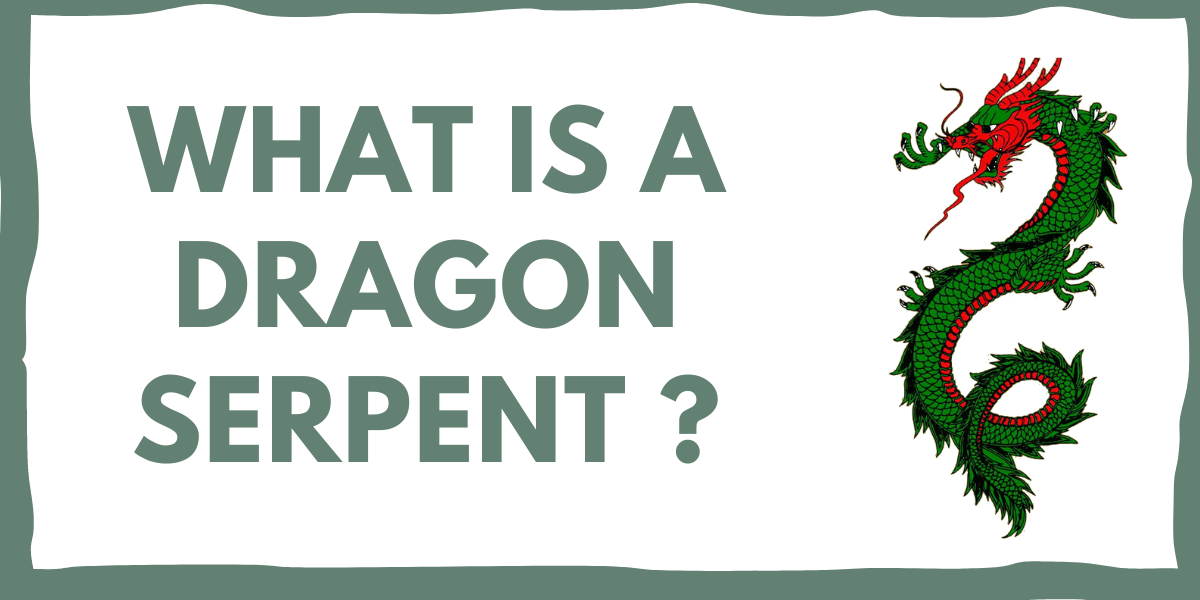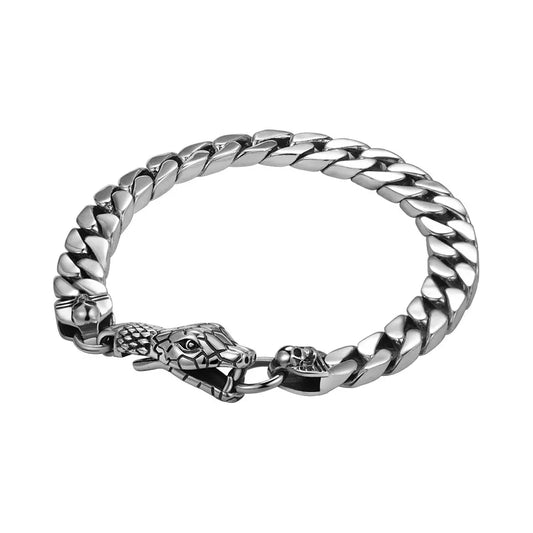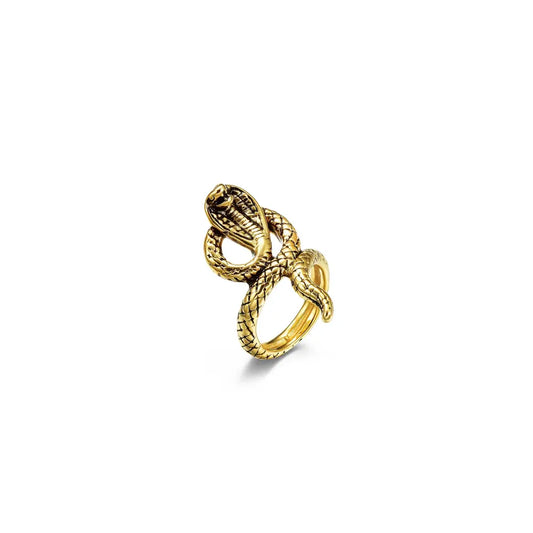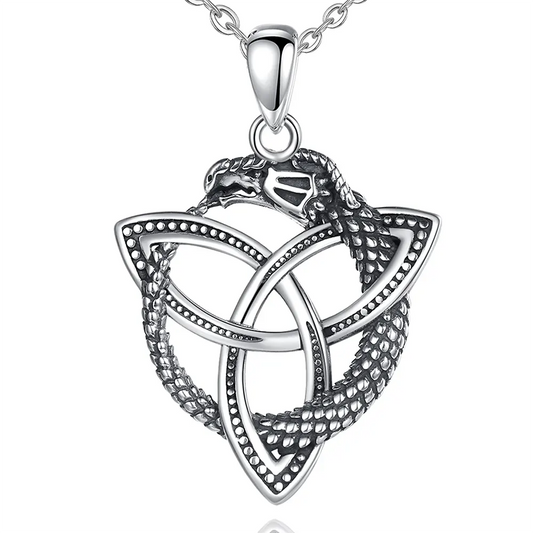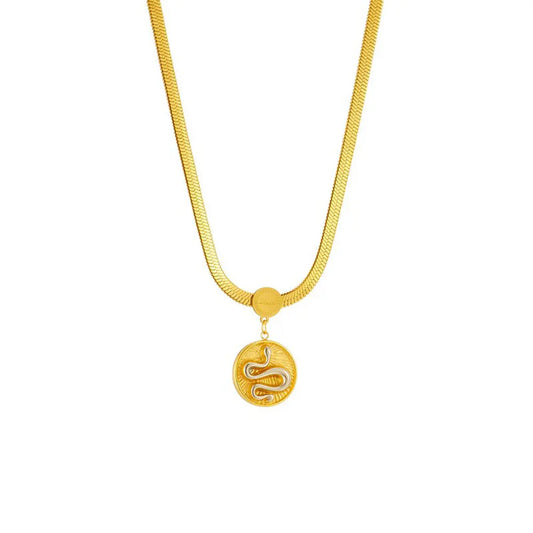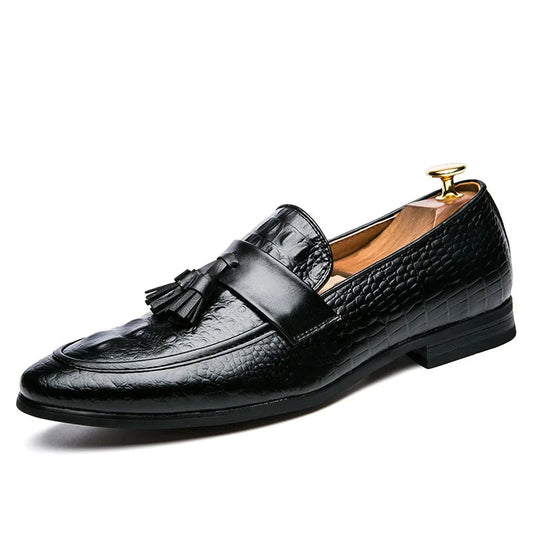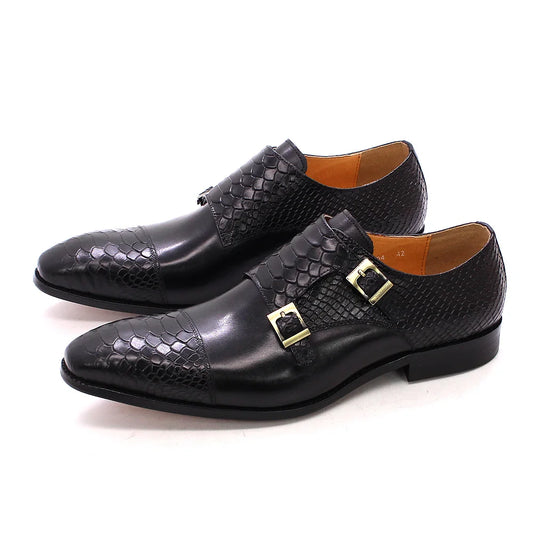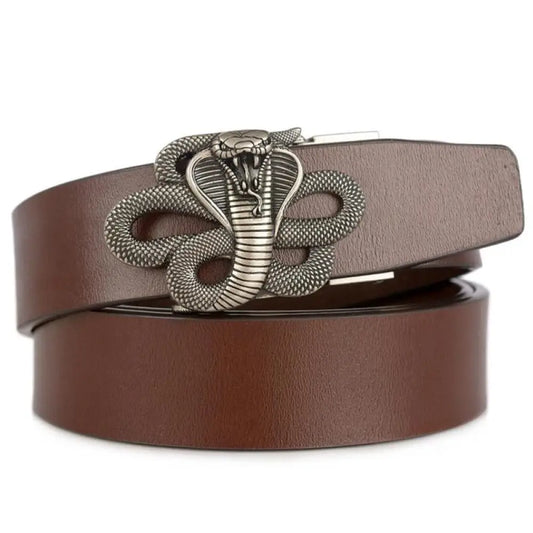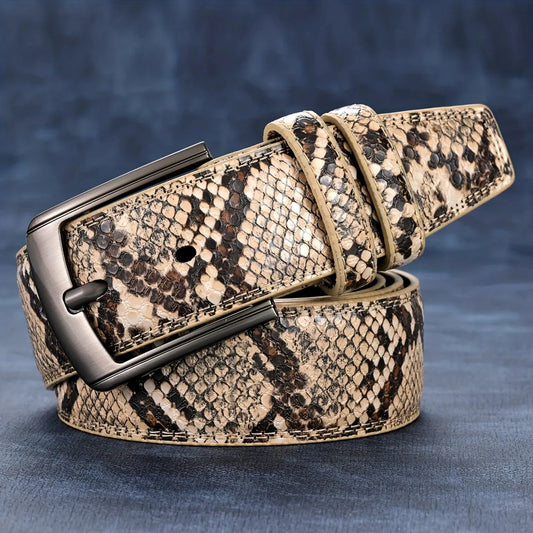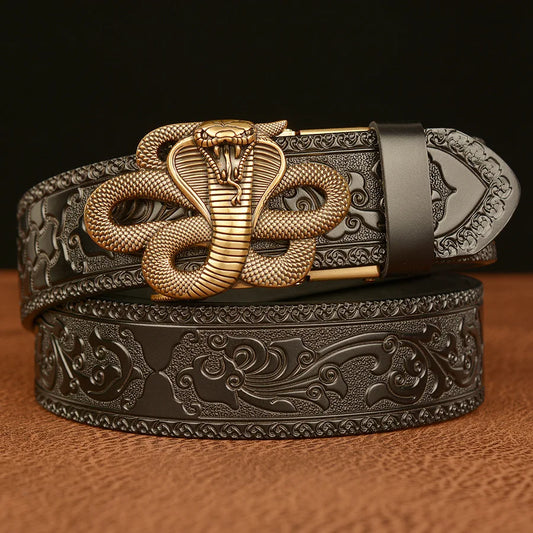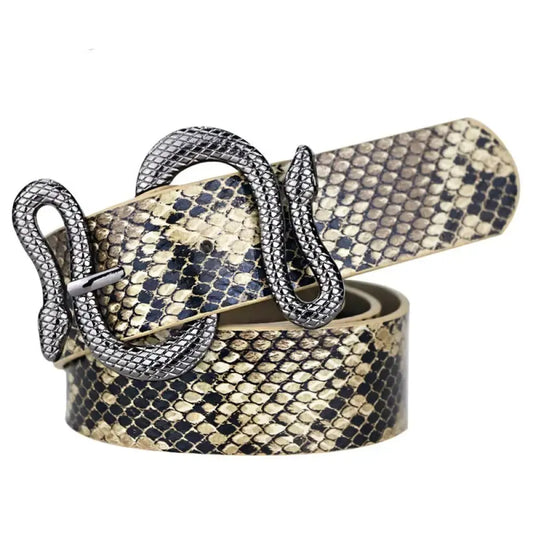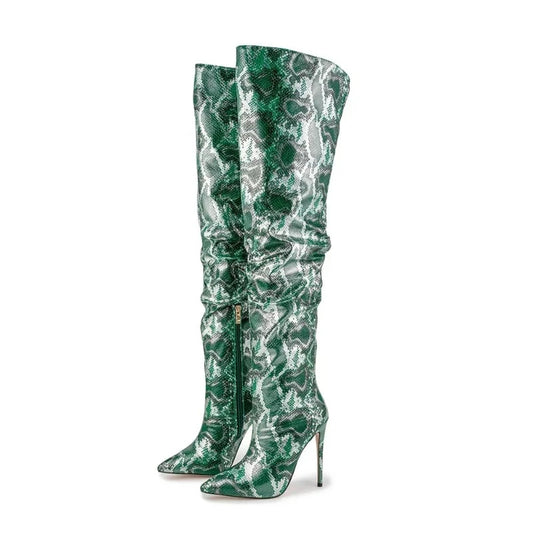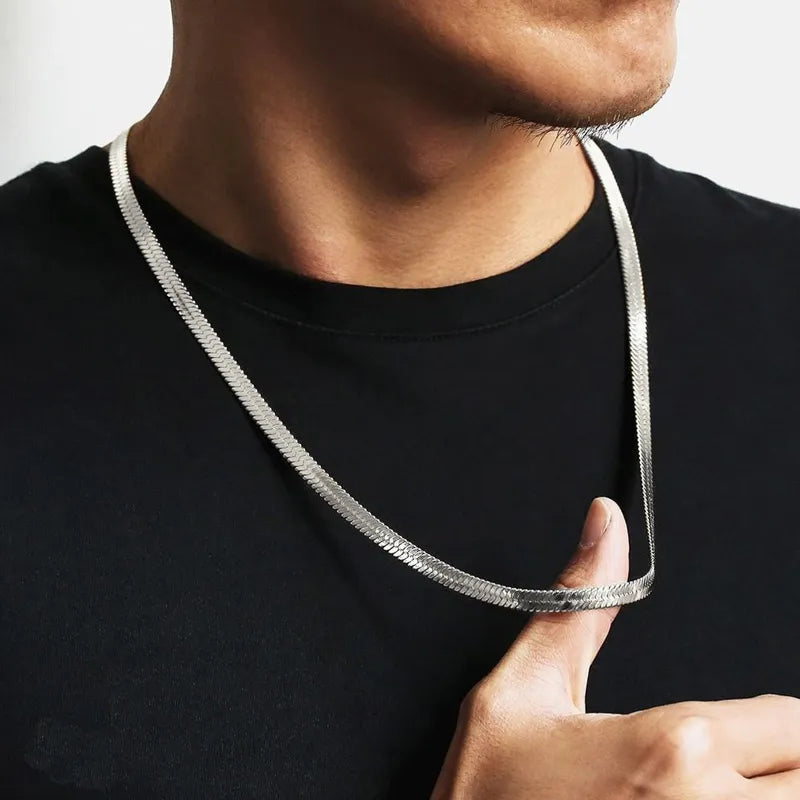Have you ever wondered why dragons dominate through dragon fantasy, pop culture, and myths? 🤔 These exotic reptiles are spread in many cultures through books, television, video games. Still, it wasn't until Game of Thrones that dragons became worshipped in mythological culture: already in ancient times, our ancestors venerated and feared dragons.
In Greek mythology, dragons are creatures related to snakes with fabulous attributes or powers, often consecrated by the gods to guard treasure or sacred places.
The incredible popularity of dragons throughout time and culture is due to their proximity to snakes. Some even call them winged snakes or that the lizard is the descendant.
1. SNAKE AND DRAGON: THE ORIGINS OF THE MYTH
Since the dawn of time, we have often made the connection between dragons and snakes. The word's origin comes from the Latin "Draco" and the Greek word "Drâkon." In ancient Rome, the Draco was a magnificent animal with a serpent body and the head wolf.
Many Roman emblems use the representation of this beast as an emblem. In Greek mythology, the Drâkon were giant snakes.

When you think of a creature that looks like a dragon, what's the first thing that comes to mind? Chances are it's a snake. Dragons are often represented with long snake bodies and elongated necks. In both cases, the resemblance to snakes is obvious 🔍. Snakes are perfect for giving birth to a terrifying iaginary mortal creature: they have a sometimes scary face, sharp hooks, and on top of that, they can be very dangerous.

We have an innate fear of snakes ingrained in us through evolution. But researchers have also identified an extreme fear of snakes in the brains of some primates such as monkeys. This fear of snakes has a straightforward reason: if you're afraid of a creature, you're going to be more careful to stay away from it. And if it gets close to you, you will quickly run away 💨! It is especially useful when the creature in question is potentially deadly.
With such an image, no wonder snakes have inspired terrifying Mythical Creatures like dragons!
Talking about snakes, we invite you to discover our snake ring collection.
2. WESTERN DRAGON
The Western Dragon differs from the Eastern Dragon in several ways:
- It has a reptile shape (or even a dinosaur shape), but not necessarily a snake shape.
- Many times it's a Dragon With Wings Like Bats.
- He can spit fire 🔥 and has poisonous breath.
- He can strangle large animals with his tail.
- The European dragon has four legs. If it has 2, it is not a dragon but a Wyvern.
- The western dragon often has large claws, sharp fangs, and horns on its head.
- Its scales are impenetrable armor.
The dragons in European stories are compelling, evil, and dangerous. They have connected to the element of fire because they can get spitfire. In the Christian tradition, dragons can symbolize Satan or sin.
Some nest in caves and beautiful guard treasures or young princesses 👸 that they have kidnapped. When they are hungry, they can capture and devour sheep or cattle that wander too close to their lair. These fantastic reptiles can also eat humans, especially young girls.

Epic poems from the Middle Ages tell the story of warriors, knights, and magicians who fight cruel and voracious dragons ⚔️; in the hope of saving a princess. In some stories, the hero kills the dragon and wins fortune, honor, and the hand of his bride. In others, he fails and is killed or burned.
Even today, in European culture, the dragon has remained a powerful symbol of betrayal, as has the snake for that matter. In European Tales, dragons often live deep in caves and caverns filled with precious stones 💎, in swamps, or abandoned castles. Some sleep during the day and go wild after nightfall.
3. EASTERN DRAGON
The second primary type of dragon is the Oriental Dragon, or "Chinese Dragon." Unlike Western dragons, the Asian dragon has a long body very similar to serpents 🐉. It still has 4 paws with sharp claws, fangs, and a powerful tail. However, the Chinese dragon has no wings, although it can move by flying.
According to Chinese legends, dragons live at the bottom of seas, rivers, lakes, or any place with water.
The oldest image of the Chinese Serpent Dragon dates back to the 5th millennium BC! Oriental Dragons are powerful and benevolent symbols, which have always been present in Chinese culture. In ancient times, dragons were symbols of imperial power and Deities. They also exercise control over aquatic phenomena, for example, the call of rain during a dryness. They're therefore associated with the element of water 💧.
Dragons in Asia are considered reasonable and bring good luck. They are, therefore, very different from the evil, dangerous, and fire-breathing winged dragon found in most Western stories. Asian Dragons symbolize being lucky, auspicious, powerful, and noble 👑. They are not as monstrous as in Western novels, and may also symbolize longevity. However, they are still powerful entities that can be terrible if attacked! (not to be confused with Japanese dragons although it looks like)
Dragons are still present everywhere in China today: in ceremonies, festivals, astrology, art, names, and lucky charms 🍀. The Chinese very often wear bracelets bearing the likeness of this wise and fearsome being, such as this Steel Dragon Serpent Bracelet. or this gorgeous snake ring Chinese dragon
4. DRAGON SERPENT IN MYTHOLOGY
Now that you're familiar with the Serpent Dragons, how would you like to review the most famous and monstrous of all mythologies? Here we go...🐲
4.1 THE LEVIATHAN
Mentioned in the Bible, Leviathan is a formidable and titanic beast. He reigned over all the other creatures of the sea. There are various descriptions of the creature's origins and intent in history. But most agree that Leviathan is dangerous and capable of destruction 💀.
Leviathan is known to be a sea monster and one of God's original creations. There were many other creatures of equal power that were created, but he was known to be the most dangerous of all. The Leviathan is represented in many different ways, but most often, it takes the form of an enormous serpent.
4.2 THE BASILISK SNAKE
In European stories, a creature resembling a dragon, known as the Basilisk was sometimes described as a colossal snake born from the corpse of the Gorgon Medusa. Some authors called him the king of snakes 🐍and claimed that he could kill a man with a unique look by petrifying him, or by injecting him with a deadly venom whose only antidote is a tear of a phoenix. Basil's look was a death trap: once your gaze was immersed in his, you could no longer avert your eyes, and your end was recorded…☠️
In other cultures, the Basilisk is described as a Giant Snake as in Greco-Roman mythology. Still, it is also described as a mixture between a rooster and a snake during the Middle Ages (Basilichicken 😅).
4.3. LERNAEN HYDRA
The Hydra, also called the Lernaean Hydra, in Greek legend, was the progenitor of Typhon and Echidna. It was a gigantic water serpent monster with nine heads (the number varies), but one of them was immortal. The monster haunted the swamps of Lerna, near the city of Árgos.
It regularly came out of its lair to attack the inhabitants and cattle of Lerna. Whoever tried to decapitate the Hydra discovered that as soon as one head was cut off, two other leaders emerged from the fresh wound. It was finally Hercules who triumphed over the Hydra in one of his 12 labors 💪.
The dragons of Slavic folklore are very similar to the Hydra: a twisted body and multiple heads.
4.4. JORMUNGANDR (Jörmungandr)
Jörmungandr is a giant green dragon snake from Norse mythology, living in the depths of the ocean. It is the biggest monster in Scandinavian mythology, and that's no small thing since Nordic mythology includes Jotunheim, a kingdom populated by giants! Even God Thor himself failed to kill the snake in his fight with the beast 😨.
👉 If you want to know more about this powerful dragon, take a look at this blog post about the Midgard serpent
The name Jörmungandr means "necklace of the earth," which is appropriate for this snake. It is so big that it can wrap its body around Midgard (the Earth, the domain of mortals) and hold the tip of its tail of dragon in its mouth like Ouroboros. Its mouth, lined with teeth full of venom, is big enough to swallow a god or a giant... It's terrifying...😰
If you like the Nordic style, then this Jormungand Ring should please you! 😍
4.5. LADON DRAGON
In ancient Greek mythology, Ladon is the titanic dragon that surrounds the trees of the Garden of Hesperides and guards the golden apples. Its reptile body is surmounted by 100 Snake Heads 🐲, each speaking a different language. This creature is one of the sons of the titans Typhon and Echidna, which explains its disproportionate size. It is the goddess Hera who entrusted Ladon with the task of guarding this mythical tree.
Ladon is accompanied by the nymphs of the Hesperides in his task. He is not a creature of evil, but he's extremely dangerous. He defends the Hesperides tree against any intruder.
Heracles killed Ladon in the 11th of his labors with a poisoned arrow. As a reward for his loyalty, Hera took Ladon to heaven after his death, and he became the constellation of the dragon.
4.6. NIDHOGG (Níðhöggr)
Nidhogg (in Old Norway Níðhöggr, literally "who strikes with malice") is a huge black snake that gnaws at the third root of the world-tree Yggdrasil 🌳. The monster also devours the corpses of murderers and adulterers. In the Nordic mythology from which he originates, Nìdhögg intends to bring chaos into the cosmos.
He has a leading role in Ragnarok, the end of the world. In a particularly crucial Scandinavian poem (the Völuspá), Nìdhögg is described as flying from under Yggdrasil during Ragnarök, probably to help the cause of the giants. Other sources indicate that the appearance of Nìdhögg will signal the end of Ragnarök and that the dragon snake will carry away the bodies of the warriors who died ☠️.
On the contrary, other sources maintain that when Nìdhögg leaves his root to tread the soil of Midgard, it will announce the beginning of Ragnarök.
According to the legend, because of its vanity, the objects with its effigy made it possible to move an eye evil snake.
The Nordic warriors decorated themselves with jewels in his likeness to go to Valhalla in case of death on the battlefield (and not to end up in the mouth Nìdhögg!).
4.7 WYVERN DRAGON
The Wyvern Dragon is a cruel black dragon. Two bat wings surmount t's reptilian body. A wyvern has only two legs, which is what differentiates it from dragons, which usually have four.
The legendary dragon of Medieval Europe is one of the most aggressive dragons. A Wyvern can spit fire through its mouth or nostrils and blow a poisonous foul air on its victims 🤢. Its two legs are powerful enough to destroy the cottage of an unlucky villager.
In European Mythology, these dragons are the guardians of the dangerous dungeons of a hidden treasure or gem.

4.8. APOLLO AND THE PYTHON
In Greek mythology, Python was a vast drake snake that ruled over the oracle of the region of Delphi.
According to Greek gods legend, when the goddess Leto became pregnant with Zeus, she carried the twin gods Artemis and Apollo. However, Hera, Zeus' wife, became angry when she learned of her husband's infidelity 😡. She ordered Python to chase Leto away so that she would not give birth anywhere where the sun shines.
Leto was accepted on the newly formed island of Delos, where she gave birth to her twins. When Apollo grew up, he wanted revenge, and so he hunted the dragon. Python, pursued by Apollo, left Mount Parnassus, where he lived and went to Delphi.
Apollo found and defeated Python 🏹, but the son of Zeus redeem himself because he had committed a sinful act. So Apollo founded the famous Pythian Games, to purify himself.
4.9. BAHAMUT DRAGON
Bahamut (also called Behemoth) is a creature of a size beyond comprehension, serving as a support to the world in Arab cosmography (the study of the cosmic organization). Alternatively, in Hebrew mythology, he is the most massive earthly creature ever created 😰. He is currently hiding in the underworld. But according to the legends, he will return during the chaos and destruction of Judgment Day.
In Arabic mythology, Bahamut is generally described as a being half fish, half serpent of unimaginable size. As for his size, ancient mythology says this: "All the waters of the world, placed in one of his nostrils, would be like a mustard seed in the desert"... This gives a small idea of this powerful draconic.
Some myths describe Bahamut as having the head of a hippopotamus or an elephant 🤔. In the Hebrew texts, it is given a more monstrous form. It appears as a gigantic sea serpent or a red dragon with sharp limbs and teeth.
5. DRAGON SERPENT AS A REAL ANIMAL?
5.1. DRAGONSNAKE
Now you know the main dragon snakes in mythology. But did you know that there is such a (well, almost) real creature?
The Dragon Serpent (Xenodermus javanicus) is a strange-looking, non-venomous Colubrid snake species found in Southeast Asia 🌏. The species occurs in several countries, including Indonesia, Myanmar, Brunei, Malaysia, and Thailand.
The Dragon Snake is most often found in areas close to water or streams, including forests, swamps, marshes, swamps, and especially rice paddies.
It is a fossorial snake (it digs galleries and can live in them) that spends most of its time underground. These snakes are mainly active at night 🌙to stalk their prey.
5.2. A SNAKE WITH DRAGON SCALES
The most remarkable characteristic of these dragon snakes is their unusual skin. It is composed of 3 rows of "keeled" scales on the back. These scales look like a cross between a snake and a crocodile 🐊.
It is straightforward to understand why they are commonly called snake dragons since their scales are similar to those of dragons.
In addition to their strange look, they also have a peculiar habit. When touched or picked up, they become stiff, almost like a plank.
The dragon snakes are considered rare and are not very often kept as pets because the species does not fare well in captivity, and usually does not survive very long. There is very little information and breeding advice available, so it is probably best to leave them in the wild 👍.

5.3. THE MYSTERY OF DRAGON SNAKES
We still know very few things about this snake with dragon scales 😕. Dragon snakes are about 70cm long and greyish. They have a slightly enlarged head and an elongated tail. Johannes T. first described the species in 1836. Reinhardt, a Danish zoologist.
The dragon snake belongs to the monotypic genus Xenodermus, which means that it is the only species of this genus, and no subspecies are recognized ❌. The scientific name of the species derives from the Greek words "Xeno" meaning strange and "derma" meaning skin, referring to their extraordinary appearance, at least for a snake...
6. To sum up...
- There are different types of dragons.
- Symbolic creatures present in many myths and legends.
- They speak of the serpent dragon in Egyptian mythology and also in ancient Greek and Roman mythology, and the Babylonian text.
- In Europe, they're considered fire-breathing demons.
- Dragons are known to spit hot air.
- In religious texts, the biblical text refers to a Titan creature with a destructive capacity...
- A lot of civilizations like Vietnamese Chinese and Japanese still venerates these mythological creatures. They are represented by statue, sculpture, or rituals.
- Theroricians believe that dinosaurs could be descended.
































































